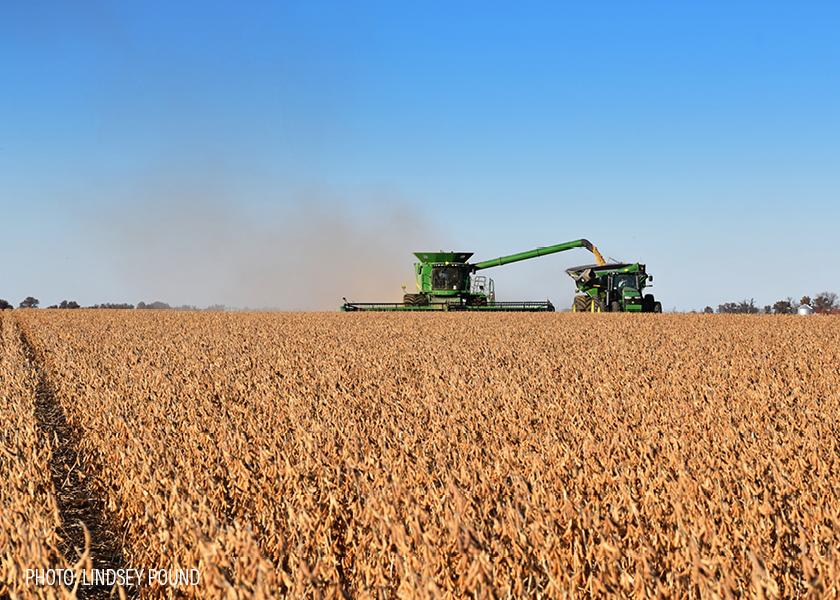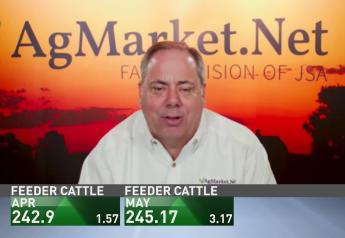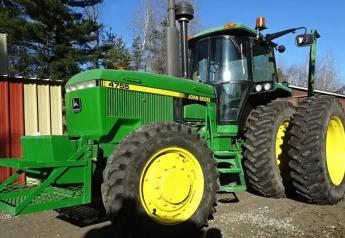Bushel Bump: USDA Shows a Slight Increase for Corn, Soybean Yields

Small crops are no longer getting smaller. In its November round of crop reports, USDA increased both the national corn and soybean yield by 0.4 bu.
For corn, USDA raised its yield estimate to 172.3 bu. per acre and left harvested area at 80.844 million acres. Total production is at 13.93 billion bushels. That compares to 15.074 billion bushels in 2021.
For soybeans, USDA raised its yield estimate to 50.2 bu. per acre. It left harvested area at 86.631 million acres. Total production is at 4.346 billion bushels, which compares to 4.465 billion bushels in 2021.
“Quite frankly this was a boring report,” says Matt Bennett, co-founder of AgMarket.net. “November is normally a boring report but this year it wasn’t expected to be so much because we thought they might change yield. We had minor upticks in yield for both corn and beans, but it wasn’t a huge difference.”
While the increase in yield was small, it was a big of a surprise, Bennet says. Typically, if USDA drops yields in its September and October reports, you follow suit in November.
“Overall, the report didn’t give us much new information,” he says.
Record corn yields are forecast in California, Illinois, Virginia, Washington and Wisconsin. In the top 12 production states, USDA raised its yield estimate in:
- Illinois (up 5 bu. to 215 bu. per acre)
- Indiana (up 4 bu. to 191 bu.)
- Iowa (up 2 bu. to 202 bu.)
- Minnesota (up 1 bu. to 191 bu.)
- Missouri (up 3 bu. to 154 bu.)
- North Dakota (up 2 bu. to 143 bu.)
For soybeans, record yields are forecast in Arkansas, Mississippi and South Carolina. In the top 13 production states, USDA raised its yield estimate in:
- Iowa (up 1 bu. to 59 bu. per acre)
- Missouri (up 3 bu. to 48 bu.)
- Nebraska (up 1 bu. to 50 bu.)
- North Dakota (up 1 bu. to 36 bu.)
USDA left its yield estimate unchanged in Arkansas (53 bu.), Illinois (64 bu.), Indiana (59 bu.), Kansas (28 bu.), Michigan (46 bu.), Minnesota (50 bu.), Ohio (55 bu.) and Wisconsin (54 bu.). USDA lowered its yield estimate in South Dakota (down 1 bu. to 39 bu.).
Supply-And-Demand Picture
Corn: 1.182 billion bushels for 2022-23; up from 1.172 billion bushels in October, which compares with 1.377 billion bushels in 2021-22.
Soybeans: 220 million bushels for 2022-23; up from 200 million bushels in October, which compares with 274 million bu. in 2021-22.
USDA raised its 2022-23 corn carryover projection 10 million bushels from last month but was 25 million bushels below the average pre-report trade estimate. USDA increased total supplies for the 2022-23 marketing year by 35 million bushels, reflecting the increase to the 2022 corn crop estimate.
On the demand side, USDA increased total use 25 million bushels with feed and residual use up by that amount to 5.3 billion bushels. All other demand forecasts were unchanged from last month.
For soybeans, USDA increased its 2022-23 soybean carryover projection 20 million bu. from last month and was 8 million bu. above the average pre-report trade estimate. USDA increased total supplies 32 million bu. due to the bigger bean crop estimate.
On the demand side, USDA increased total use 12 million bu. from last month. Crush was raised 10 million bu. to 2.245 billion bu. and residual use was increased 2 million bu. to 22 million. All other usage estimates were unchanged from last month. USDA puts the
“Domestically we’re in a tight situation for both corn and soybeans,” Bennett says.
Currently USDA pegs the national average on-farm cash corn price for 2022-23 at $6.80 per bushel and the national average on-farm cash bean price for 2022-23 at $14 per bushel.
“We’ve been extremely blessed by prices being elevated for quite some time, but there’s no guarantee they will continue,” Bennett says. “Producers need to manage risk wisely.”
Grains turn mixed midday after initially lower following the WASDE. USDA slightly increased corn, soybean and cotton yields, production and ending stocks. The report was a non-event for wheat. Michelle Rook gets reaction from Jim McCormick of AgMarket.Net.







